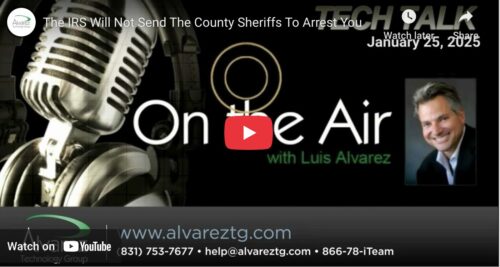Protect Your Wallet Now
A new texting scam is targeting FasTrak users. The scammers claim they owe money for using toll lanes and threaten penalties if they don’t pay. FasTrak officials warn that they do not send text messages to non-account holders and that any messages demanding specific payments should be ignored.
If you receive a suspicious text about FasTrak charges, verifying the information through official channels is crucial. You can check your account status directly on the FasTrak website. The company has issued an advisory about this nationwide phishing scam, urging drivers to disregard texts detailing specific outstanding toll amounts.
Protecting yourself from this scam is straightforward. Be skeptical of unsolicited texts regarding toll charges, especially those demanding immediate payment. Contact FasTrak directly through their official website or customer service line if you’re unsure about a message.
Key Takeaways
- FasTrak users are being targeted by a new texting scam falsely claiming unpaid tolls
- Always verify toll charges through official FasTrak channels, not unsolicited texts
- Report suspicious texts to authorities to help combat this widespread phishing attempt
Understanding the FasTrak System
FasTrak is an electronic toll collection system used in California. It allows you to pay tolls without stopping at toll booths, saving time and reducing traffic congestion.
To use FasTrak, you need a transponder in your vehicle. This small device communicates with sensors at toll plazas, automatically deducting the toll from your prepaid account.
FasTrak is widely accepted on:
- Bridges
- Express lanes
- Toll roads
You can manage your FasTrak account online or through a mobile app. This includes adding funds, updating vehicle information, and viewing transaction history.
It’s important to maintain a positive balance in your account. If your balance runs low, FasTrak typically sends notifications via email or text message.
Remember, legitimate FasTrak communications will never ask you to click on links or provide personal information through unsecured channels. Always verify the authenticity of any messages claiming to be from FasTrak.
By understanding how FasTrak operates, you can better protect yourself from potential scams while enjoying the convenience of electronic toll payments.
Overview of the New Texting Scam
A deceptive text message scheme is currently targeting FasTrak users across California. This scam aims to trick drivers into revealing their financial information by claiming unpaid toll fees.
Modus Operandi of Scammers
Scammers send text messages claiming you owe money for using FasTrak lanes. These texts often include a link to a fraudulent website requesting online payment. To create a sense of urgency, the messages may threaten penalties for non-payment.
The fake websites are designed to look official, making it difficult to distinguish them from legitimate FasTrak pages. Scammers use this tactic to gain your trust and increase the likelihood of you entering your banking details.
Be cautious of any text or website that appears official – it may be fraudulent. Legitimate FasTrak communications typically don’t request immediate payment via text message.
Recent Incidents and Reports
California Attorney General Rob Bonta has warned of a significant increase in text-based toll scam activity. These scams target drivers across the state, affecting various toll roads and bridges.
FasTrak representatives have confirmed that these texts are a ruse to obtain credit card information. They advise users not to click on any links provided in suspicious messages.
If you receive such a text, do not respond or click links. Instead, contact FasTrak through their official website or customer service line to verify any supposed charges.
How the Scam Affects Users
This texting scam targeting FasTrak users can have serious consequences for those who fall victim. The fraudulent messages and websites put users at risk of identity theft and financial losses.
Potential Risks to Personal Information
You expose yourself to significant privacy risks when you interact with these scam texts and fake websites. The fraudsters may collect your name, address, phone number, and email address. More alarmingly, they could capture your driver’s license number, credit card details, or bank account information.
This sensitive data can be used to:
• Open new credit accounts in your name • Make unauthorized purchases • Access your existing financial accounts • Commit other forms of identity theft
To protect yourself, never click links in unsolicited texts claiming to be from FasTrak. Instead, log into your official account directly to check for legitimate charges or notifications.
Financial Implications for Victims
Falling for this scam can lead to immediate and long-term financial consequences. When you enter payment information on a fraudulent site, scammers can:
• Make unauthorized charges to your credit card • Drain your bank account through direct debits • Use your financial details for future fraud
You may also face recovery costs related to identity theft, such as credit monitoring services or legal fees. Resolving unauthorized transactions can be time-consuming and stressful even if you catch the fraud quickly.
To avoid these risks, always verify toll charges through official FasTrak channels. Remember, FasTrak will not request payment via text message with a link to an external website.
Official Responses and Warnings
Authorities have issued urgent alerts about fraudulent FasTrak text messages targeting drivers. Key organizations are taking action to protect consumers and provide guidance on avoiding these scams.
FasTrak’s Statements
FasTrak has warned drivers about a new texting scam claiming unpaid tolls. The company does not send text messages demanding immediate payment or threatening penalties.
FasTrak advises you to:
- Never click links in suspicious texts
- Avoid providing personal information via text
- Check your account directly through official channels
If you receive a questionable message, FasTrak recommends forwarding it to your mobile carrier’s spam reporting number (usually 7726) and deleting it immediately.
Law Enforcement Advisories
California Attorney General Rob Bonta has issued an urgent warning about the surge in text-based toll scams. He advises you to be cautious of any “official-looking” texts or websites, as they may be fraudulent.
Key points from law enforcement:
- Verify charges through FasTrak’s official website or app
- Report suspicious activities to local authorities
- Be wary of threats or pressure to pay immediately
Police departments across California are actively investigating these scams and urge you to stay vigilant. They recommend educating family and friends about this fraud to prevent further victims.

Identifying and Avoiding Scams
Protecting yourself from FasTrak text scams requires vigilance and knowledge of proper verification methods. Understanding best practices for account security and knowing how to respond to suspicious messages are crucial steps in safeguarding your personal information.
Verification Methods
FasTrak does not send text messages about billing issues. If you receive a text claiming to be from FasTrak, it’s likely a scam. To verify any supposed charges:
- Log into your official FasTrak account directly through their website.
- Check your account balance and recent activity.
- Contact FasTrak customer service using the official phone number on their website.
Never click links or call numbers provided in suspicious texts. These may lead to fake websites designed to steal your information.
Best Practices for Account Security
To keep your FasTrak account secure:
- Use a strong, unique password for your account.
- Enable two-factor authentication if available.
- Regularly monitor your account for unauthorized charges.
- Keep your contact information up to date.
- Never share your account details or password with anyone.
Be wary of emails or calls requesting personal information. FasTrak will never ask for sensitive data through unsecured channels.
What to Do If You Receive a Suspicious Message
If you get a suspicious text about FasTrak fees:
- Do not reply or click any links.
- Take a screenshot of the message for reporting purposes.
- Block the sender’s number.
- Report the scam to FasTrak through their official website or customer service line.
- Alert your local law enforcement if you’ve shared any personal information.
Legitimate FasTrak communications will direct you to their official website or provide verifiable contact information. When in doubt, always contact FasTrak directly using their official channels.
Reporting and Addressing Scam Incidents
If you’ve encountered a FasTrak text scam, taking prompt action is crucial. Reporting the incident and seeking support can help protect you and others from fraud.
How to Report a Scam Attempt
Forward the suspicious text to 7726 (SPAM) to alert your mobile carrier. This helps them track and block scam numbers.
To report the incident, contact FasTrak directly through their official website or customer service line. They can confirm whether the message is legitimate and take the necessary steps.
File a report with your local law enforcement agency. Provide them with all relevant details, including the text content and any actions you may have taken.
Submit a complaint to the Federal Trade Commission (FTC) at ftc.gov/complaint. This aids in tracking scam trends and initiating investigations.
Support Resources for Scam Victims
If you’ve fallen victim to a scam, contact your bank or credit card company immediately. They can help secure your accounts and possibly reverse fraudulent charges.
Visit IdentityTheft.gov for a personalized recovery plan if your personal information is compromised.
Seek support from consumer protection organizations. They offer guidance on recovering from fraud and preventing future incidents.
Consider placing a fraud alert or credit freeze on your credit reports to prevent unauthorized accounts from being opened in your name.
Use free credit monitoring services to detect suspicious activity on your accounts promptly.
Educational Efforts and Consumer Protection
FasTrak and government agencies are taking proactive steps to combat texting scams targeting drivers. These initiatives focus on raising public awareness and implementing stricter regulations to protect consumers from fraud.
Public Awareness Campaigns
FasTrak has launched extensive public awareness campaigns to educate drivers about the ongoing texting scam. Their official website and social media channels feature informative posts alerting users to fraudulent activities.
The Metropolitan Transportation Commission (MTC) has issued a fraud warning on its website, emphasizing that FasTrak never contacts customers via text messages. This crucial information helps you identify and avoid potential scams.
Local news outlets are also vital in spreading awareness. They provide detailed reports explaining the nature of the scam and tips on how to protect yourself from falling victim to these fraudulent texts.
Policy Changes and Regulations
California Attorney General Rob Bonta has warned consumers about the surge in text-based toll scams. This official statement underscores the government’s commitment to addressing the issue and protecting consumers’ interests.
Law enforcement agencies are actively investigating these scams and working to identify the perpetrators. Expect increased efforts to track down and prosecute those responsible for creating and distributing fraudulent texts.
Regulatory bodies are considering stricter policies to combat such scams. These may include enhanced verification processes for toll payments and improved security measures to protect your personal and financial information.
Future Outlook and Preventive Strategies
As texting scams become more sophisticated, authorities and toll agencies will likely increase their vigilance. FasTrak and other organizations will likely enhance their communication strategies to inform you about legitimate billing practices.
You’ll see more frequent public awareness campaigns. These will aim to educate drivers about recognizing and avoiding fraudulent texts.
To protect yourself:
- Always verify the sender’s identity before clicking links
- Check your account directly through official websites
- Use two-factor authentication when available
- Keep your personal and financial information private
Technology companies may develop more robust spam filters for text messages. This could help reduce the number of scam texts reaching your phone.
You should remain cautious of unsolicited messages claiming to be from FasTrak or other toll agencies. When in doubt, contact your regional office directly to confirm any outstanding charges.
By staying informed and vigilant, you can help protect yourself and others from falling victim to these evolving scams.





